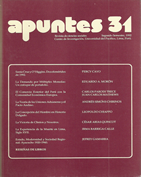The demand for multiple currencies: a portfolio approach
DOI:
https://doi.org/10.21678/apuntes.31.354Keywords:
Peru, money, currencies, money market, banks, economic modelsAbstract
This article looks at the Rolnick and Weber (1982, 1984) theory that maintains that the cause of the US free banking system crisis can be put down to the restrictions on the handing of portfolios imposed on US banks. This hypothesis is backed up by Moron’s (1990) evidence in the case of Peru and, furthermore, by this article which draws up a simple, theoretical outline to illustrate the relevance of this theory. On the basis of the pioneering works by Markowitz (1959) and Klein (1974) the author constructs a free banking model, in which various banks compete with each other, trying to show that their reputation. The reputation factor in this study is considered according to the probability distribution of purchasing power of each particular currency.Downloads
Download data is not yet available.
Downloads
Published
1992-12-07
How to Cite
Morón, E. A. (1992). The demand for multiple currencies: a portfolio approach. Apuntes. Social Sciences Journal, (31), 19–28. https://doi.org/10.21678/apuntes.31.354
Issue
Section
Articles
License
Apuntes publishes all its articles and reviews under a Creative Commons Attribution (CC BY 4.0) license with the objective of promoting academic exchange worldwide. Therefore, articles and book reviews can be distributed, edited, amended, etc., as the author sees fit. The only condition is that the name of the author(s) and Apuntes. Revista de Ciencias Sociales (as the publisher) be cited.



.jpg)
